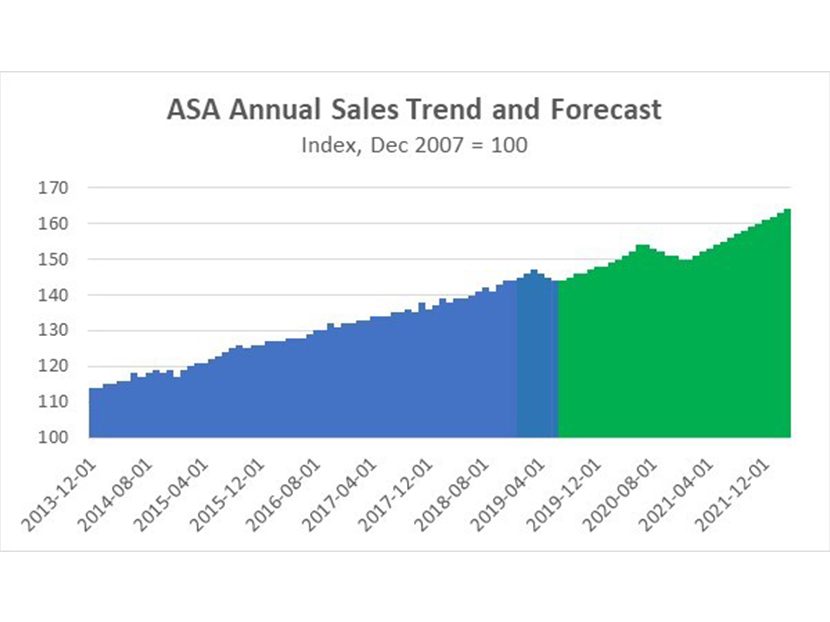ASA Member Sales Up 6.4 Percent Year-Over-Year in Q3

The American Supply Association (ASA) has announced that ASA member sales were up 6.4 percent year-over-year in the third quarter of 2019. When the U.S. Gross Domestic Product (GDP) for Q3 is released, the expectation is that it will be one of the weakest readings all year. The estimate has been between 1.5 and 1.8 percent, and that will drag the annual rate down to roughly 2 percent. According to Dr. Chris Kuehl, ASA's economic analyst, most of the damage seems to be attributed to the trade wars, but there have also been factors such as the chronic labor shortage holding back growth.
Housing starts have improved dramatically and across the board with higher-end homes and starter homes, but that pace has slowed. The most important factor for the higher cost sector has been the performance of the stock market (as opposed to mortgage rates). The overall market performance has contributed to higher levels of consumer confidence according to Kuehl.
The industry outlook seems to be holding strong as ASA member sales were up 6.4 percent year-over-year in the third quarter. Year-to-date through September, sales across the industry were up 4.8 percent on average and up 6 percent for the trailing 12 months prior. The next quarterly update will be available in January 2020. The chart shows the breakdown by primary business type and region. Looking forward over the next 36 months, the ASA sales forecast continues to be bullish, but just as with most economic outlooks, there's slight recession risk on the horizon.
As mentioned in prior months, the soft period would likely be timed with the 2020 presidential election (during the lead-up in Q2/Q3 of 2020). Typically during major presidential elections, private investment and spending slows, and it likely would provide the impetus for an economic slowdown. In Q2 and Q3 of 2019, investment and spending has slowed. Many additional factors would be involved in a recession, affecting the depth and longevity of a downturn. More information can be reviewed in the latest edition of the ASA Economic Advisor, which is available for members on www.asa.net.




